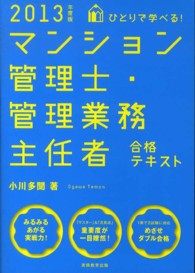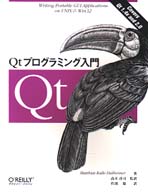- ホーム
- > 洋書
- > 英文書
- > Literary Criticism
Full Description
Alasdair Gray (1934-2019) is widely recognised as a key figure in Scottish literature and culture. His work reached a new audience in 2024 due to the release of the Oscar-nominated adaptation of his novel Poor Things. In the wake of this recent attention, The Edinburgh Companion to Alasdair Gray and the Arts interrogates both Gray's literary and visual artistic practice as well as, crucially, facilitating conversation between these forms. With chapters on his prefatory spaces, his depictions of women, his complex relationship to empire and his role as a public intellectual, it provides a historicised view of Gray's output while also introducing fresh critical approaches. The accounts of Gray's visual art gathered here provide new insights into his collaborative projects, including his work with fellow artists and assistants on large-scale murals like Òran Mór and the Hillhead Subway commission, as well as his mobilisation of exhibitions not only for himself but in support of contemporary and more junior artists. Featuring contributions from prominent authors, academics, artists, politicians and curators, this Companion explores Gray's political commitments and artistic partnerships to understand how his work has been remade and reincarnated, particularly in transmedial ways.
Contents
Acknowledgements
List of illustrations
Introduction: On What Led to Alasdair Gray and the Arts
Marie-Odile Pittin-Hedon, Camille Manfredi and Kirsten Stirling
Part I: Alasdair Gray, Politics and Community
1. Man of Independent Mind: Alasdair Gray and the Scottish Constitutional Question
Eilidh Whiteford
2. 'The matter of Scotland': Alasdair Gray and Hugh MacDiarmid
Scott Lyall
3. 'One Great Soul or Mind or Force': Alasdair Gray and Empire
Joseph H. Jackson
4. Alasdair Gray as a Public Intellectual
Carla Sassi
5. The Coherent Panopticon: Seeing Things from Every Side and Firmly Drawing a Line
Alan Riach
6. 'Mirrors reflecting mirrors': Gray Writing Women, Writing Men
Kirsten Stirling
7. Alasdair Gray's Disability Imagination: Narratives of Normalcy and Body-Minded Non-Normativity between Emphatic Thinking and Constructive Critique
Arianna Introna
8. Taoism and Sociopolitical Allegories in Alasdair Gray's Short Stories
Ning He and Hongling Lyu
Part II: Alasdair Gray in Collaboration
9. The Working Practices of Alasdair Gray
Nichol Wheatley
10. Alasdair Gray and the Art of the Creative Response: From 'The Star' to 'The Crystal Egg' and Back, Across Visual and Literary Practice
Rodge Glass
11. 'their talk of poetry / how I should write my own': Alasdair Gray's Englishing of Dante
Daragh O'Connell
12. How Lanark Ends
John Purser
13. Alasdair Gray and the Art of Prefaces
Camille Manfredi and Marie-Odile Pittin-Hedon
14. Word-Image Relationships: Alasdair Gray's Shades of White, Iconotextuality and Beyond
Anthony Remy
15. 'My instinctive decisions are also conscious ones': The Typography and Lettering of Alasdair Gray, from Micro to Monumental
Edwin Pickstone
Part III: Mediating and Adapting Alasdair Gray
16. The Exhibitions of Alasdair Gray
Jenny Brownrigg
17. Fictio and Facta: Alasdair Gray's Spatial Performativity
Federica Giardino
18. From Print to Pixel: Poor Things: A Novel Guide and the Digital Reinterpretation of Alasdair Gray's Novel Forms
Rachel Loughran
19. Adapting Poor Things for the Screen
Duncan Petrie
20. Building a Legacy through The Alasdair Gray Archive
Sorcha Dallas
21. Adapting Lanark for the stage
David Greig
Notes on Contributors








